|
|
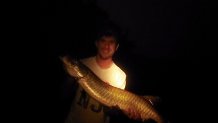
Posts: 147
Location: Northern New Jersey | I was just perusing Facebook and i saw bondy baits posted something about the record musky being caught yesterday or the day before. supposedly it has been broken by 8 pounds. i'm sure it is just talk now, but has anyone heard anything? |
|
| |
|

Posts: 147
Location: Northern New Jersey | i cant seem to find anything.
Edited by bmxrider11976 10/14/2012 9:38 AM
|
|
| |
|
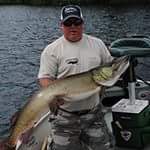
Posts: 332
Location: Michigan | A supposed 59 pounder was caught yesterday on Lake Bellaire and weighed on a certified scale.
As you know lots of numbers get thrown around when it comes to muskies, so we'll have to wait and see......
Edited by Slimeball 10/14/2012 10:06 AM
|
|
| |
|
| Bondy has a post on the lake st clair forumn about it. He saw the fish at the weigh station when he was getting gas. He said it looked like fresh water shark. His post sounds like it is the real deal. |
|
| |
|
| Yes, the fish weighed in at 58.0 and was 59 inches long. (weighed on certified scale), It was also caught on 8lb test line!!! |
|
| |
|
Posts: 719
| No I never saw it. I just re-posted what I read on another forum. |
|
| |
|

Posts: 717
Location: Grand Rapids, MI | Here is the claimed new record. Heard a few different reports. The original link that I saw said 60". Another claimed 59". And yet another, says 54" and 58lbs. Apparantly, there was a DNR officer there for an official weight, but being on a Saturday, they probably won't report anything until their offices open Monday morning.
(possible new MI record.jpg)
Attachments
----------------
 possible new MI record.jpg (25KB - 445 downloads) possible new MI record.jpg (25KB - 445 downloads)
|
|
| |
|
| I'am the guy in the middle on the picture above. It was 58.0 lbs. and 59 inches long. I caught it on 8lb test line while fishing for big smallies on Bellaire. Took 2 hours and three guys to get it in the boat. |
|
| |
|

Posts: 717
Location: Grand Rapids, MI | Joe, can you give us any more information? Did you get it OFFICIALLY weighed/measured with a DNR officer present? Any more pics you can share with us? |
|
| |
|
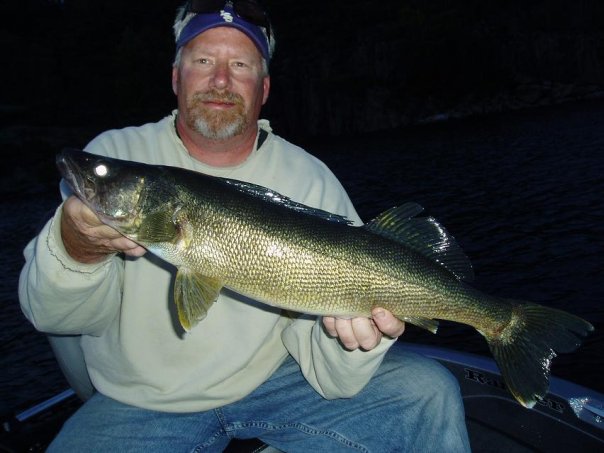
Posts: 13688
Location: minocqua, wi. | congrats Joe ... wow!!
|
|
| |
|
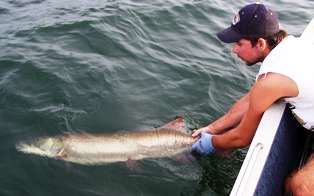
Posts: 132
Location: Missouri | That is one amazing fish. |
|
| |
|
Posts: 410
Location: Wakefield, MI | Holy smokes! |
|
| |
|
Posts: 1023
| I want more pics. Wow!!!! |
|
| |
|
Posts: 173
Location: Minnesota | That is so cool! That is a monster fish.
|
|
| |
|

Posts: 2754
Location: Mauston, Wisconsin | Wow, big fish!
Have fun!
Al |
|
| |
|
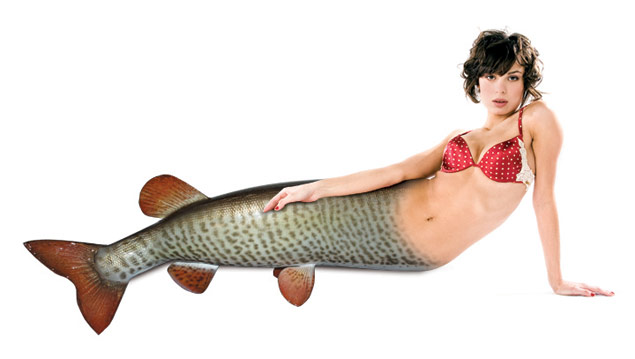
Posts: 456
Location: Kansas City BBQ Capitol of the world | Congratulations Joe, truly a fish of a life time and a memory that will last forever. What bait and presentation did you catch that on?
Ron
|
|
| |
|

Posts: 32935
Location: Rhinelander, Wisconsin | Big girl... |
|
| |
|
Posts: 120
| Congrats Joe S! Fish of a lifetime! |
|
| |
|

Posts: 4266
| What a beautiful fish. Very healthy. Looks like CA Redwood to me. |
|
| |
|

Posts: 247
Location: Uxbridge Ontario | New records means the fish is now dead.... but after a 2hrs fight, it probably wasn't going to revive anyways. Either way big big fish. |
|
| |
|
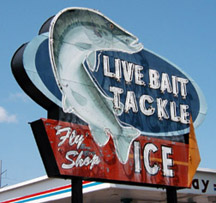
Location: Illinois | HomeTime - 10/15/2012 5:20 AM New records means the fish is now dead.... but after a 2hrs fight, it probably wasn't going to revive anyways. Either way big big fish. Nice detective work Sherlock.... Congrats on the catch, and the record Joe S!!
|
|
| |
|

Posts: 717
Location: Grand Rapids, MI | It has been verified by a CO. 59" and just over 58lbs. The scale has to be certified yet by the state, so the weight may change by a few ounces, but the Michigan state record has been broken by leaps and bounds. Absolute monster fish. There will be an official press release soon.
Edited by JimtenHaaf 10/15/2012 8:04 AM
|
|
| |
|
Posts: 410
Location: Wakefield, MI | JimtenHaaf - 10/15/2012 8:03 AM
It has been verified by a CO. 59" and just over 58lbs. The scale has to be certified yet by the state, so the weight may change by a few ounces, but the Michigan state record has been broken by leaps and bounds. Absolute monster fish. There will be an official press release soon.
Congrats to Joe S! That's a monster, can't wait for more pics. |
|
| |
|

Posts: 910
Location: South-Central VA | Congrats dude! Beautiful fish...would love to see more pictures!
jeremy |
|
| |
|
Posts: 378
Location: Michigan | Isn't it amazing that many big fish are lost in seconds with multiple large hooks, set by stout rods and 100lb line, yet a super tanker like this stays pinned for 2 friggen hours on bass gear... This fish just wanted to die... I would like to know she was still swiming, but you were within the law, so congratualtions for playing that fish just right. On super low density water no less... Fish of the century here in Michigan... |
|
| |
|
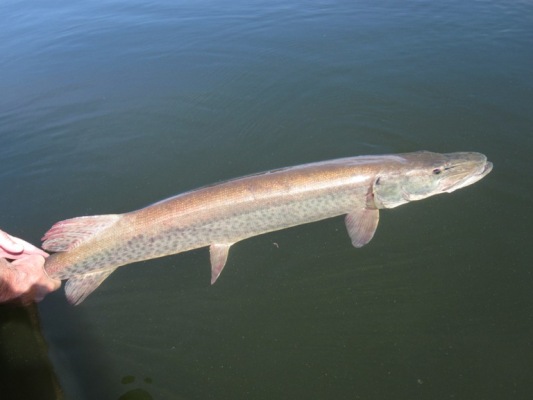
Posts: 8844
| Nice! Congratulations. |
|
| |
|

| Wow great fish Joe - congratulations |
|
| |
|

Posts: 16632
Location: The desert | Great fish! |
|
| |
|
Posts: 1638
Location: Minnesota | that is a great fish. i dont know why but it seams like i seen it befor. i just dont know where it was in any case that is the one were all after, i to would like to see more pic of this fish |
|
| |
|

Posts: 243
| Congrats Joe! Really cool to see Michigan recognized for a fish of that caliber. |
|
| |
|
Location: 31 | Can you imagine going bass fishing and then coming home with something like this? Congratulations to all 3 anglers (but especially Joe of course) because it sounds like a real team effort. It even took three of them to hold it... one hell of a fish. |
|
| |
|
Posts: 515
Location: Ludington, MI | For those who don't know, Bellaire is linked to but separated by a dam from the Elk-Skegemog-Torch chain that produced the current Michigan state record fish.
Is it true this fish was cradled by a lifejacket rather than netted? |
|
| |
|

Location: Grand Rapids, MI | tundrawalker00 - 10/15/2012 11:18 PM For those who don't know, Bellaire is linked to but separated by a dam from the Elk-Skegemog-Torch chain that produced the current Michigan state record fish. Is it true this fish was cradled by a lifejacket rather than netted? Actually, it is connected by undammed river to those lakes mentioned. The dam at Bellaire is above the lake and separates it from the upper chain at Intermediate Lake.
Edited by Will Schultz 10/15/2012 10:37 PM
|
|
| |
|
Location: 31 | I have boated from Elk Lake to Bellaire, there is no dam between the lakes just narrow channels. There is a dam between Bellaire and Intermediate though. |
|
| |
|
| Yes, that was caught on belle aire lake, 58lbs 59" long. |
|
| |
|
Posts: 415
| That's an awesome fish for sure, especially to beat the record by that much. Would love to see some other photos if available. |
|
| |
|
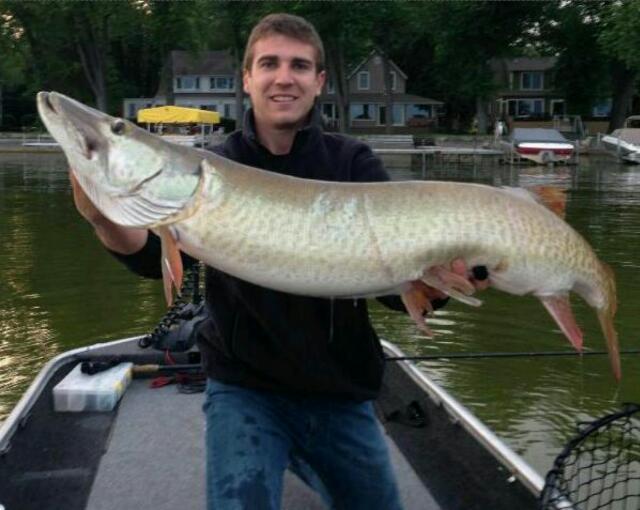
Posts: 151
Location: IL | Awsome Fish! Congrats! |
|
| |
|
Posts: 993
| so now its officially declared the new michigan state record (no suprise), congrats to the angler
...caught on a bass minnow under a bobber. what the...?
Edited by Ronix 10/16/2012 1:39 PM
|
|
| |
|
Posts: 209
| Here's a little better picture of it
Attachments
----------------
 muskie.jpg (60KB - 518 downloads) muskie.jpg (60KB - 518 downloads)
|
|
| |
|
Posts: 1638
Location: Minnesota | nice thanks for the new pic |
|
| |
|
Posts: 410
Location: Wakefield, MI | That's a much better picture. Awesome fish! |
|
| |
|
| Thanks for all of the positive feedback from most of the muskie nation!!!!! For the record she was caught on a split shot rig not under a bobber. |
|
| |
|
Posts: 120
| Congrats again, Joe! Great proof that you just never know what that next cast could bring. WTG! |
|
| |
|
| Great Fish!!! Just curious if they got the girth? |
|
| |
|
Posts: 1297
Location: WI | Definately one of the biggest muskies ever caught. Congrats! If it was released there would be 30 pages of arguing how big it actually was...so in a way it's nice to see a verified giant. I really don't know what I'd do in that situation, catching one that BIG. Crazy fish.
Doesn't MI recognize 2 records for Musky..inland and Great Lakes? Wasn't there another 50lber caught in that chain in the past 2 years? |
|
| |
|

Location: Grand Rapids, MI | JKahler - 10/17/2012 12:03 AM
Definately one of the biggest muskies ever caught. Congrats! If it was released there would be 30 pages of arguing how big it actually was...so in a way it's nice to see a verified giant. I really don't know what I'd do in that situation, catching one that BIG. Crazy fish.
Doesn't MI recognize 2 records for Musky..inland and Great Lakes? Wasn't there another 50lber caught in that chain in the past 2 years?
The records are for Northern Muskellunge (Wisconsin) and GL Muskellunge, this chain contains GL Muskellunge. Yes, there was a 50.5 pound fish caught that was part of a tracking study at the time of her capture.
|
|
| |
|
| So what are you going to do with it? Have you decided who will do the work on it? Will you tell us your decision and why you picked who you did? |
|
| |
|
| Congratulations Joe, incredible accomplishment! I'm not sure if you are fully aware of what records mean in the muskie world, but you are now basically kind of a big deal! This fish is edging into world record class- there have not been many verified, honest fish that were bigger. |
|
| |
|

Location: Grand Rapids, MI |
Ben Olsen - 10/17/2012 12:28 AM Great Fish!!! Just curious if they got the girth? Per the taxidermist it was 29"
Edited by Will Schultz 10/17/2012 12:31 PM
|
|
| |
|

Posts: 243
| The difference between 58 and 62 for a fish that size is one meal. Chances are it could have weighed over 60 at some point. |
|
| |
|

Location: Grand Rapids, MI | The measurement of length also makes a huge difference. If measured over the top of the fish at 59 or along the fish while vertical the measurement might be off slightly (not saying that's what happened here I just know it wasn't measured on a bump board). A bumpboard measurement would likely yield something around 57 and 57 would make her fit the formula. Since the record is by weight an exact length on a bumpboard isn't a concern. |
|
| |
|
Posts: 1086
| Awesome fish!!! And awesome story as to how it was caught and how long the angler hung in there with the fish to not have broken the light weigh line or straighten out a hook! Anyone can yank a fish out of the water using a rope and a pool cue. It takes finesse and patience to land a fish of this caliber on that kind of light gear.
As for the weight of the fish, don't forget, creatures that were once alive, now that they're dead, they start dehydrating quickly and losing water weight from the muscle tissue and the contents within it's bowels...so that fish easily could have weighed 60lbs depending on how long the time frame was from when it was first landed to the point where it was placed on a certified scale.
Heck, I've caught muskies before that loose quite a bit of their "poo" on the bottom of my boat just lifting them from the net for a quick photo while the fish is still green! One, certain Fall-time fish comes to mind from years ago...it was crappin' out mostly digested shad all over the bottom of my boat...talk about a mess! There was some weight lost right there from that fish... LOL!
Oh... those two calculations that are floating around out there that can be used to try and determine a fish's weight...those are approximate. They're not an exact science. Those calculations will get you within a ballpark number. No two fish are created/built equal. Those calculations could get you within a couple to few pounds, one way or the other. Gotta have a certified scale to be exact...everything else is an approximation.
Regardless of a few pounds one way or the other, that's immaterial. Awesome fish...awesome catch...awesome story to go with it. Truly cool.
Edited by MACK 10/17/2012 2:41 PM
|
|
| |
|
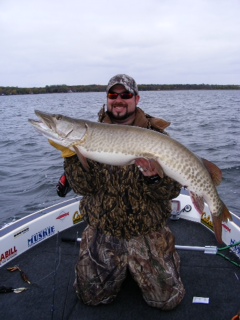
Posts: 265
Location: Manitowish Waters WI | HomeTime - 10/15/2012 5:20 AM
New records means the fish is now dead.... but after a 2hrs fight, it probably wasn't going to revive anyways. Either way big big fish.
It was probably going to croak of old age any minute either way. |
|
| |
|
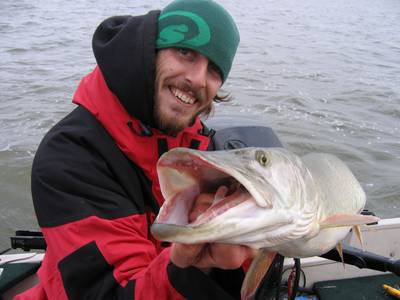
Posts: 152
Location: Nowhere near where I should be | Thats what dreams are made of!
Congrats to the anglers. |
|
| |
|
Posts: 410
Location: Wakefield, MI | http://www.fieldandstream.com/photos/gallery/fishing/2012/10/pending-michigan-state-record-muskie?photo=0#node-1001478815 Field and stream article. Has a few more pictures. |
|
| |
|
Posts: 410
Location: Wakefield, MI | Will Schultz - 10/17/2012 12:17 AM
JKahler - 10/17/2012 12:03 AM
Definately one of the biggest muskies ever caught. Congrats! If it was released there would be 30 pages of arguing how big it actually was...so in a way it's nice to see a verified giant. I really don't know what I'd do in that situation, catching one that BIG. Crazy fish.
Doesn't MI recognize 2 records for Musky..inland and Great Lakes? Wasn't there another 50lber caught in that chain in the past 2 years?
The records are for Northern Muskellunge (Wisconsin ) and GL Muskellunge, this chain contains GL Muskellunge. Yes, there was a 50.5 pound fish caught that was part of a tracking study at the time of her capture.
Just to confirm, the MI state record for Northern Musky is still 49 lb 12 oz, correct? |
|
| |
|

Location: Grand Rapids, MI | milje - 10/17/2012 11:03 PM Will Schultz - 10/17/2012 12:17 AM JKahler - 10/17/2012 12:03 AM Definately one of the biggest muskies ever caught. Congrats! If it was released there would be 30 pages of arguing how big it actually was...so in a way it's nice to see a verified giant. I really don't know what I'd do in that situation, catching one that BIG. Crazy fish. Doesn't MI recognize 2 records for Musky..inland and Great Lakes? Wasn't there another 50lber caught in that chain in the past 2 years? The records are for Northern Muskellunge (Wisconsin ) and GL Muskellunge, this chain contains GL Muskellunge. Yes, there was a 50.5 pound fish caught that was part of a tracking study at the time of her capture. Just to confirm, the MI state record for Northern Musky is still 49 lb 12 oz, correct? Yes, that is correct. |
|
| |
|
| esox1980 - 10/17/2012 7:17 PM
It was probably going to croak of old age any minute either way.
ha yeah she looks to be wasting away!!
7" sucker for smallmouth!? This dude do not mess around! |
|
| |
|
| So who is going to mount it?????? |
|
| |
|
Posts: 1086
| Guest - 10/18/2012 8:22 AM
So who is going to mount it??????
From the article:
"The fish has already been dropped off to Jeff Lutz of “Lasting Memories” taxidermy in Charlevoix, Mich."
|
|
| |
|
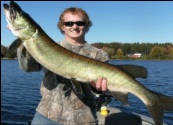
Posts: 143
Location: La Crosse, WI | Duke - 10/18/2012 7:39 AM
7" sucker for smallmouth!? This dude do not mess around!
Big smallies love big baits in the fall. Heck of a fish and an even better story. Takes a lot of skill and patience to catch a fish that big on that light of tackle. Congratulations! |
|
| |
|
| Thanks Mack....! |
|
| |
|
| To those of you who question why I did not take a picture by myself it's simple. I could not have landed this awsome fish without the help of my brother Chuck and friends Jason and Derek. It was a team effort and I want to share the moment with everyone who made it possible. |
|
| |
|

Posts: 32935
Location: Rhinelander, Wisconsin | Great answer, Joe. Beautiful fish! |
|
| |
|
Posts: 187
Location: West Metro, MN | Congrats Joe and his team. Talk about the fish of a lifetime!! Now you need to get that record smallmouth. |
|
| |
|
| Congrats Joe that is one awesome fish. |
|
| |
|
Posts: 541
| great fish! |
|
| |
|
Location: Green Bay, WI | Congratulations to the angler (and his assistants!) for an incredible catch! A spectacular catch indeed. I would make one request in the name of science though--please ask the taxidermist to preserve the cleithra, so that they can be made available to a biologist for study. We simply do not see many of these fish of that magnitude get documented, so the data from the cleithra will be invaluable to the sport. I see Will posted in this thread, so I am sure he's already on top of this. But still, if no one has asked...please consider donating the cleithra from this fish for scientific study.
On behalf of the whole sport I'll say THANK YOU in advance, and once again offer my congratulations on this magnificent catch!
TB |
|
| |
|

Location: Grand Rapids, MI | tcbetka - 10/22/2012 12:55 PM Congratulations to the angler (and his assistants!) for an incredible catch! A spectacular catch indeed. I would make one request in the name of science though--please ask the taxidermist to preserve the cleithra, so that they can be made available to a biologist for study. We simply do not see many of these fish of that magnitude get documented, so the data from the cleithra will be invaluable to the sport. I see Will posted in this thread, so I am sure he's already on top of this. But still, if no one has asked...please consider donating the cleithra from this fish for scientific study. On behalf of the whole sport I'll say THANK YOU in advance, and once again offer my congratulations on this magnificent catch! TB Yes, got it covered Tom. My guess is she'll be 20. |
|
| |
|
Location: Green Bay, WI | Great to hear Will. I'll bet that she's closer to 24 year old though. It will be very interesting to hear how it turns out. Have you run the metrics through the various calculators, to see how close they were? I don't have the app on this machine, so I'll have to dig it up and give it a whirl...
EDIT: I found the latest version of the calculator app, and ran the numbers using 59x29". Here is the outcome:
Wilkinson: 58.9 lbs
Standard: 62.0 lbs
Crawford: 58.4 lbs
Casselman/Crossman: 61.7 lbs
So they aren't too far off. Excellent...
TB
Edited by tcbetka 10/23/2012 1:57 PM
|
|
| |
|
Posts: 437
| That is a truly amazing catch. While I dont wish to diminish your accomplishment, is it too much to ask for an angler who is targeting said species to catch a record fish? 
Anyway, its a true beauty and undoubtedly a story you will share for the rest of your lives. |
|
| |
|

Posts: 717
Location: Grand Rapids, MI | tcbetka - 10/23/2012 2:48 PM
Great to hear Will. I'll bet that she's closer to 24 year old though. It will be very interesting to hear how it turns out. Have you run the metrics through the various calculators, to see how close they were? I don't have the app on this machine, so I'll have to dig it up and give it a whirl...
EDIT: I found the latest version of the calculator app, and ran the numbers using 59x29". Here is the outcome:
Wilkinson: 58.9 lbs
Standard: 62.0 lbs
Crawford: 58.4 lbs
Casselman/Crossman: 61.7 lbs
So they aren't too far off. Excellent...
TB
The previous Michigan record caught 9/2009 was a 55"er and was only 15 years old... I put my bet in already, and I said 22.  |
|
| |
|

Location: Grand Rapids, MI | Just got word on the age of this fish and using cleithra she was 21 YO. |
|
| |
|
Location: Green Bay, WI | Excellent. Thanks for the update!
TB |
|
| |
|
Posts: 688
Location: Northern IL | A real freak of a fish in age and in size,,, and a great catch indead! Thanks Will for the info. |
|
| |
|
| why would he have someone like that with him if he was fishing for smallies. |
|
| |
|
Posts: 1296
Location: Hayward, Wisconsin | Great fish for that young age...great genetics!
Also a reminder to Tom & all...the formula's were fairly close because the fish was DEAD when measured...Live girth is different and larger and thus throws the formula's off and over estimates the fish weight. |
|
| |
|

Posts: 32935
Location: Rhinelander, Wisconsin | brandon - 4/22/2013 11:42 PM
why would he have someone like that with him if he was fishing for smallies.
?? |
|
| |
|
Location: Green Bay, WI | Well, but doesn't Warren's equation try to take that into account Larry? I thought it was his that tried to account for that variable? Interesting how his and Roy's equations yielded the results that were most in agreement--and, I might add, were the two closest to the actual certified weight of the fish.
I need to call Kevin Kapuscinski. His grad student was working on a better version of equations for different populations, as I understand it. But I'm not sure where they are in the effort at this point.
TB |
|
| |
|

Location: Grand Rapids, MI | Tom - The length was 58 not 59 recheck the formulas with the bump board length. If you use the /800 formula and subtract 1/2" as suggested for fish 55+ it comes in within 1/2 pound? |
|
| |
|
Location: Green Bay, WI | Will Schultz - 4/23/2013 6:57 PM
Tom - The length was 58 not 59 recheck the formulas with the bump board length. If you use the /800 formula and subtract 1/2" as suggested for fish 55+ it comes in within 1/2 pound?
If I use 58x29, that makes it come out even better actually. I'll also attach a zipped folder with the calculator in it. Just unzip it and double-click on the executable.
TB
Attachments
----------------
 BigFish.jpg (94KB - 304 downloads) BigFish.jpg (94KB - 304 downloads)
 Calculators.zip (15KB - 309 downloads) Calculators.zip (15KB - 309 downloads)
|
|
| |
|
Posts: 1296
Location: Hayward, Wisconsin | Yes Tom, Warren's formula adjustment takes some of it into account, but still often overstates weight. But since almost everyone uses the Standard Formula, most "estimates" are overstated. As I have noted before on three fish this past December, the Standard Formula greatly overstated fish weighed before release on an IGFA Certified scale:
One calculated 55 pounds via formula and weighed 49
One calculated 58+ pounds via formula and weighed 51
One calculated 63.66 pounds via formula and weighed 58 |
|
| |
|
Location: Green Bay, WI | I would agree with your concerns regarding the standard equation Larry. As you'll recall when we were researching this, I called the IGFA and talked to their "historian." As it turns out, no one there could tell me *why* they used the equation they did--or the origins of that equation! I'm sure that it must have been explored scientifically by now, as there's a LOT of money spent in that industry to chase after billfish alone. I just haven't done a literature review on it, because most of those articles are published in journals that are not available...except to members. Or they charge $100 or more for one article! It's not like the musky world where if you have to pay for the article, it's quite reasonable. I've only had to pay for a few articles in the past several years, and it's never been more than $25.
Anyway, I can spend a bit of time researching the standard equation now. But I am going to give Kevin a call and find out where things are with their research. Maybe I can take advantage of some of his knowledge (or that of his grad student) to shed more light on the origins of the standard equation.
TB |
|
| |
|
Location: Green Bay, WI | OK, I spoke with Kevin. He advised that (grad student) Derek hasn't been working on that project lately--due to funding constraints. So we're going to start trying to work on that problem. However he didn't think that Derek had really researched the origins of the various equations. So the search continues...
TB |
|
| |
|

Location: Grand Rapids, MI | Larry Ramsell - 4/23/2013 8:48 AM Live girth is different and larger and thus throws the formula's off and over estimates the fish weight. Larry - I've got some concerns about this statement... A live fish will have all muscles and connective tissue still functioning normally (still have blood flowing). The girth should therefore measure less than on a dead fish if taken at the widest point. Physiologically it's not logical (to me) that a girth taken at the widest point would be larger on a live fish than a dead fish because the dead fish will not have any cavity support and any fluid, organs, egg mass, etc. seems to settle in one (widest) location. I've always thought that it would be more accurate if common measurements were used. For instance one measurement at the pectoral fins and one at the pelvic fins instead of using the widest point squared method. A formula would have to be refined for this method but in the end it should yeild better results.
Edited by Will Schultz 4/24/2013 12:47 PM
|
|
| |
|
Location: Green Bay, WI | Will Schultz - 4/24/2013 12:40 PM
Larry - I've got some concerns about this statement... A live fish will have all muscles and connective tissue still functioning normally (still have blood flowing). The girth should therefore measure less than on a dead fish if taken at the widest point. Physiologically it's not logical (to me) that a girth taken at the widest point would be larger on a live fish than a dead fish because the dead fish will not have any cavity support and any fluid, organs, egg mass, etc. seems to settle in one (widest) location.
While it's true that the conservation of mass dictates the fluids inside the live fish must still be present in the same fish after death, it's the distribution of those fluids that (I think) makes the difference. So the perfusion of the tissues of a living muskellunge creates a somewhat different shape for the fish, compared to the fish post-mortem. How true this in fish, I'm not sure--but it's certainly true in humans to some extent. Besides the obvious, people who die simply do not look the same as people who are alive. We're used to seeing them at funerals or at a memorial service (wake), and they look very "life-like." However that's due to the work of the mortician, to a large degree. That's their purpose...pretty much.
Contrast this with a dead fish. The muscles are no longer as toned due to the absence of flowing blood--and the resulting lack of oxygen in the muscles results in rigor, which then opposes the normal "natural" body form (at least for a number of hours anyway).
I've always thought that it would be more accurate if common measurements were used. For instance one measurement at the pectoral fins and one at the pelvic fins instead of using the widest point squared method. A formula would have to be refined for this method but in the end it should yield (edit) better results.
This is very good thought Will, and I've wondered it myself several times. I think that might be just one of the things that can be determined by a project like that which Dr. Kevin Kapuscinski (SUNY) and his graduate student want to work on. Simply put, I just don't think anything like that has been done before--at least I've never seen it mentioned in any of the literature that I've read. But research takes funding, and that's one thing that seems to be in very short supply of late.
TB
Edited by tcbetka 4/24/2013 1:30 PM
|
|
| |
|

Location: Grand Rapids, MI |
What I meant by the above is that a live fish has a more cylindrical shape, fluids/organs distributed evenly. A dead fish takes on a convex cylinder shape with fluids/organs settling. Live fish: http://bioweb.uwlax.edu/bio203/s2009/long_alex/images/LymphosarcomainMuskie.jpg Dead fish: http://www.fish.state.pa.us/images/be/splashes/2005/se08_29tiger.jpg
Edited by Will Schultz 4/24/2013 2:13 PM
|
|
| |
|
Posts: 1296
Location: Hayward, Wisconsin | Will:
You are forgetting the swim bladder, which is full in a live fish. Also, we noted that in current areas you can actually see the stomach "grow" while the fish is in the net! When the fish is no longer alive, then thing relax/empty out and the girth changes. That is why the Wilkinson formula was developed using reduced girth before calculation. Estimated weight in the boat killed a lot of fish in Georgian Bay and in as short as an hour later, the angler was very disappointed to find he had killed a fish what didn't weigh what he thought/wanted.
Years ago I tried to develop a formula for various shaped muskies. There are so many different shapes of muskies (at least 6) that it is impossible for any one formula to be consistent or accurate to any degree, especially when the "key" measurement is the girth, which is squared. And in the end we are relying on a multitude of different people to apply the right formula and to take proper measurements...not very scientific or accurate.
For now I'll stick with my motto: "If you don't weigh it, you shouldn't say it."
It takes very little time to weigh a super fish on a certified scale. There is no need to weigh the rest. If you are happy with the over-"estimation" that using the formula gives, fine...no harm no foul. But if you intend to claim "record-class" weights, then weigh it.
Edited by Larry Ramsell 4/24/2013 5:41 PM
|
|
| |
|
Location: Green Bay, WI | Pretty well sums it up Larry. Just carry a scale--preferably a certified one.
TB |
|
| |
|

Location: Grand Rapids, MI | Yes, I wasn't even thinking about an expanded swim bladder, air doesn't weigh anything. |
|
| |
|
Location: Green Bay, WI | I don't believe that the shape of a dead musky differing from the shape of a live musky, will do anything to the girth...
Think about it: What weighs more...a pound of lead, or a pound of feathers? If the fish has a cross-sectional girth of 30" and it's cross-section is perfectly round where measured, what is it's girth if it is flattened?
30"
The fact that the shape of the cross-section differs is irrelevant as far as I can tell. Thirty inches is thirty inches, and the law of conservation of mass is my God on that one. However the caveat is what happens to muscular tone and tissue perfusion when the fish dies. My medical training tells me that they must change by at least a small amount, like perhaps a couple per cent--simply because the muscles are now relaxed and the soft tissue is more "flaccid" as there is no effect attributable to either hydrostatic or hydrodynamic pressures. (The latter would be less important than the former in a system at equilibrium, since the net fluid movement is essentially zero.)
So this is in my opinion why the girth differs slightly, as might be accounted for by Warren Wilkinson's "live fish" modification to the standard equation. It was seven years ago now, but I seem to recall that Warren told me he just did a whole bunch of calculations to eventually settle on the 0.75" value in his equation. Maybe Larry has a better recollection of that than I do though.
TB |
|
| |
|

Location: Grand Rapids, MI | Tom - Though the mass is the same a convex and parallel cylinder are going to have different maximum circumferences. If we take cylindrical balloon and fill it with water and lay it on the ground and the circumference is 4" and then we take the balloon and hold it by each end the water will expand the middle and the maximum circumference is going to be larger. The mass hasn't changed at all. |
|
| |
|
Posts: 441
| Joe;
Congrats on an amazing fish!!
Awesome story, and to be able to share it with your fishing partners, is just icing on the cake!!!!!
It's remarkable!!!!
Think about it. Thousands and thousands of muskie nuts, pounding world-class waters, every day, and night. You go out and catch one of the biggest muskies, of all-time, on 8 lb test, with a little spinning rod.
That is awesome!!!!!!!
` |
|
| |
|
Location: Green Bay, WI | I'm not sure I buy your analogy, but I'm not quite sure I understand it well either Will...
While a water balloon has a constant density across its volume (that of water), a muskellunge does not. Its internal structure is not of constant density--and therefore I think you'll find that it is MUCH less susceptible to (shape) deformation than a water balloon. So while the cross-sectional shape of a live vs. a dead musky will certainly change to some degree, I'd bet $1 it won't be all that significant. Hence I believe we'd see only a small differential between live and dead girths.
The thing about Warren's equation is that the 0.75" factor is constant across ALL fish--it does not factor in the size of the fish. So the same equation tries to estimate the weight of a fish with a 20" girth in the same fashion as a fish of 30" girth. So where is the 0.75" value optimized for? Still even with that question, the difference isn't all that great. But I guess the FIRST question should be about whether or not it's even the right factor to use--how did Warren arrive at that value, for instance? If it was simply through experimentation, then of course there will be some bias...namely the different general body shapes of the fish, as Larry mentioned above.
Bottom line: These calculators will only ever be one thing...estimations of the weight of a fish, based upon length and girth at the greatest diameter. I think you hit the nail on the head when you posted about needing a more complex set of girth measurements in order to account for variability in general body shape. In general though, I think that is what Kevin Kapuscinski had in mind for the project they were/are planning. Muskies across the range will have different general shapes, so why not see if we need a different set of equations for Kawartha Lakes than we do for Mille Lacs...or a different equation for the St. Lawrence than for Shoepack Lake?
TB |
|
| |
|

Location: Grand Rapids, MI | I agree that the change isn't going to be substantial, it's just something that I would like to know more about without killing a bunch of fish. Looking at the photos of this fish alive laying on a flat surface and then seeing her in person laying on a flat surface dead the shape was very different, girth too. The real wild card is, as Larry reminded me, will be how much the swim bladder expands.
Edited by Will Schultz 4/24/2013 9:12 PM
|
|
| |
|
Location: Green Bay, WI | Yeah, I'm not sure how much influence the swim bladder would have on the live or dead girth. I'll have to defer to Larry on that one. Muskies are physostomes, so they have a connection between the swim bladder and the gut--so does this imply that the bladder will deflate as the fish is no longer alive to stop it from happening? Quite frankly I'm just not sure what the mechanism is whereby they prevent gas escape while they are alive. Obviously there is something, otherwise what good is the bladder, and why even have a duct? So there is undoubtedly some sort of sphincter apparatus/device to allow voluntary (or even involuntary) control of the swim bladder volume. Otherwise they'd be walleyes!
TB |
|
| |
|
Posts: 1296
Location: Hayward, Wisconsin | Tom:
Digging in my memory, but I'm sure Warren's formula had two girth subtractions: .75 inch for fish under 40 pounds and a full Inch for fish over 40 pounds. His "work" started after several friends and other anglers he heard about did the measurements in the boat and the Standard Formula indicated that they had their 40 pound (or 45 pound) goal. An hour later when they weighed only 38 pounds or so, they were disappointed. He discovered that remeasuring the girth of the then DEAD fish, they were 3/4 to one inch less than in the in the boat girth measurement while the fish was alive.
As for "shapes" I think the researchers would be chasing a ghost for different populations as the multiple shapes I found could be found in most populations with fish of substantial size! |
|
| |
|
Location: Green Bay, WI | We're starting work this week on "version 2.0" of the weight calculator you and I worked on Larry. Do you know that it's been SEVEN years since we did that first version?!? Where does the time go... Anyway, we'll need to research that sort of thing and then we can incorporate any such changes into the next version.
By the way--I think that we should take out the Hannon equation as it simply doesn't seem to be anywhere near the others--and it's always WAY off for anything of substantial length. I only included it because people were actually Mr. Hannon's esocid variation back when I was researching this whole thing. However since then it doesn't seem to be used much at all--so why even include it at all any more? Hopefully if it did nothing else the calculator we did illustrates the variations in equations out there, and effectively culls those that don't seem to apply to the species.
So stay tuned for v2.0. Once we get it working for Windows, we will concentrate on versions for embedded systems as well--Android, iOS (iPad/iPhone), Mac, Linux...the whole nice yards. May as well make it available to as many people as possible. I am going to start a thread in the "Research" section of the forum so that we can discuss the things that should/should not be in the next version. This thread has been a GREAT discussion, and serves as a reminder of just why the calculator can be such a valuable tool.
TB
Edited by tcbetka 4/25/2013 10:30 AM
|
|
| |
|
Posts: 1296
Location: Hayward, Wisconsin | Tom:
Definately take out the Hannon formula...never was valid.
As for being a valuable tool, I will be convinced of that ONLY when the "estimates" are at or BELOW the actual weight. |
|
| |
|
Location: Green Bay, WI | Roger that... New thread created here:
http://muskie.outdoorsfirst.com/board/forums/thread-view.asp?tid=85...
TB |
|
| |
|
| If Warren's formula calls for a girth subtraction of 1" for live muskies over 40 lbs. then the Michigan record should have had a 30" girth at the time of capture. Using his formula at that time would result in a weight estimation of 60.97 lbs which is still an overestimation of 2.97 or almost 3 lbs. Using the standard 800 formula on the fish while it was alive would result in a weight of 65.25 lbs. which is an unacceptable estimate. Considering that Warren's formula was developed using the girth of live muskies it should not be considered accurate when applied to a dead fish such as the Michigan record.
If the girth of a muskie remains constant as Tom believes, changing the divisor to 840 on the standard 800 weight formula will result in a weight of 58 lbs., or the correct weight of the 29" x 59" Michigan record. If the girth decreased 1" on the muskie after death and the muskies live girth was 30", a divisor of 900 will give the fish the correct weight of 58 lbs. So maybe the formula G x G x L / 900 would be more accurate than Warren's formula for released muskies over 40 lbs. What do you guys think?
|
|
| |
|
Location: Green Bay, WI | I wouldn't say that I think the girth *doesn't* change (I think it does indeed), so much as I am just not sure how MUCH it changes. That's the point I meant to get across in my previous posts.
That being said, I've started a new thread for discussion on the new version of the calculator. We could discuss stuff like program logic there as well, if you'd like.
TB |
|
| |
|
Location: Green Bay, WI | Guest - 4/25/2013 11:14 AM
SNIP...
If the girth of a muskie remains constant as Tom believes, changing the divisor to 840 on the standard 800 weight formula will result in a weight of 58 lbs., or the correct weight of the 29" x 59" Michigan record. If the girth decreased 1" on the muskie after death and the muskies live girth was 30", a divisor of 900 will give the fish the correct weight of 58 lbs. So maybe the formula G x G x L / 900 would be more accurate than Warren's formula for released muskies over 40 lbs. What do you guys think?
I forgot to mention before that I believe Will said the correct dimensions of the fish are 58x29, so that's why I re-ran the calculations there on page 3. That will possibly change your idea of what the denominator might be.
TB |
|
| |
|
| Tom,
I incorrectly stated the length at 59" but the 840 divisor works on the correct length of 58". 29" x 29" x 58" / 840 = 58.06 lbs.
30" x 30" x 58 / 900 = 58 lbs. As you can see the divisors are correct and the 59" was nothing more than a typo. |
|
| |
|
Location: Green Bay, WI | Sorry...I didn't run your numbers, so no sweat on the typo. But while your denominator value might work for this ONE fish--it needs to be tested across many different potential sizes. That's the difference between a general equation, and a model that can be used to represent fish across their range--and it's one of the ideas behind the proposed research I've alluded to. When I worked a bit with Doug Hannon to revise his general bass equation for esocids, I made calculations on many potential fish sizes...and then tested those against the results from the other four equations. And you can see how far off that equation still is, LOL.
So for now, these equations are the best we have for in a general sense.
TB |
|
| |
|
| LR: Yes Tom, Warren's formula adjustment takes some of it into account, but still often overstates weight. But since almost everyone uses the Standard Formula, most "estimates" are overstated. As I have noted before on three fish this past December, the Standard Formula greatly overstated fish weighed before release on an IGFA Certified scale:
One calculated 55 pounds via formula and weighed 49
One calculated 58+ pounds via formula and weighed 51
One calculated 63.66 pounds via formula and weighed 58
Tom,
The average overestimation of these muskies was 6.22 lbs.
29.76" x 29.76" x 58" / 800 = 64.21 lbs - 6.21 lbs. = 58 lbs.
29.76" x 29.76" x 58" / 885 = 58.04 lbs. (Formula for released muskies over 40 lbs. ... G x G x L / 885).
Girth decreased .76" after death
29" x 29" x 59" / 840 = 58.06 lbs. (Revised formula for dead muskies over 40 lbs. ...G x G x L / 840).
What do you think?
|
|
| |
|

Location: Grand Rapids, MI | Just for the sake of curiosity how deep were those fish when hooked? I'm questioning whether any formula can ever be truly accurate. If the formula is offset for overly expanded swim bladders it will understate fish that aren't just as the current formula overstates fish with overly expanded swim bladders. |
|
| |
|
Location: Green Bay, WI | I think you've lost me...
If you are talking (in your example calculations) about Mr. Seeberger's fish, why are you using 29.76"? I apologize if I've missed it somewhere that the fish was actually 29.76" in girth, but I was using 29.00" inches. So those are the numbers I plugged in to the calculator and then posted the screen shot. It appears from your numbers (if we are talking about the same fish) that you've added 0.76" to the girth. Where are you getting that from?
Ah wait, I think I see. You've *added* the value in order to adjust the denominator to make the result come out right?
If that's what you've done...no. I would disagree with that. All that is doing is doctoring the numbers to make the answer be more in agreement for this fish. So then how well would it work for the next fish, or the one after that...or the n'th fish into the future?
So please elaborate on your intent there because I'm not sure I follow what you're going for.
Thanks.
TB |
|
| |
|
Location: Green Bay, WI | Will Schultz - 4/25/2013 2:24 PM
Just for the sake of curiosity how deep were those fish when hooked? I'm questioning whether any formula can ever be truly accurate. If the formula is offset for overly expanded swim bladders it will understate fish that aren't just as the current formula overstates fish with overly expanded swim bladders.
I don't know if that's an issue with physostomes though Will. Maybe with physoclists like walleye, sure...I could see that. But the fact that muskellunge have the duct and can (presumably) voluntarily expel or replenish air from the bladder seems to indicate to me that they are also somehow "aware" that it needs to be done. Note that I'm not say they make a conscious effort to do it mind you--just that they likely have evolved with some way to adjust that pressure relatively quickly. Nature doesn't seem to do things by accident, so the fact that these fish still possess a duct to vent that bladder suggests that they have the ability to do it when needed.
TB |
|
| |
|

Location: Grand Rapids, MI | tcbetka - 4/25/2013 3:30 PM Will Schultz - 4/25/2013 2:24 PM Just for the sake of curiosity how deep were those fish when hooked? I'm questioning whether any formula can ever be truly accurate. If the formula is offset for overly expanded swim bladders it will understate fish that aren't just as the current formula overstates fish with overly expanded swim bladders. I don't know if that's an issue with physostomes though Will. Maybe with physoclists like walleye, sure...I could see that. But the fact that muskellunge have the duct and can (presumably ) voluntarily expel or replenish air from the bladder seems to indicate to me that they are also somehow "aware" that it needs to be done. Note that I'm not say they make a conscious effort to do it mind you--just that they likely have evolved with some way to adjust that pressure relatively quickly. Nature doesn't seem to do things by accident, so the fact that these fish still possess a duct to vent that bladder suggests that they have the ability to do it when needed. TB Keep in mind though we're talking about stressed fish and their ability to expel gasses may be compromised. I've had to manually burp muskies and in extreme cases used other methods to get fish with over-expanded air bladders swimming again. So, though they have the ability to do this it appears as it the system isn't as simple as it sounds. In each "problem" fish, they were caught at depths greater than 15'.
Edited by Will Schultz 4/25/2013 2:46 PM
|
|
| |
|
Location: Green Bay, WI | How much of that gas has come up with them, versus air being gulped while the fish is at the surface and out of the water?
When people are stressed, their respiratory rates often increase. They can also basically gulp air that ends up in their stomach. How much of that is going on in these fish? Instinct tells me that it might well be pretty significant.
TB |
|
| |
|

Location: Grand Rapids, MI | I've seen fish that never surfaced until they were in the net have problems with expanded bladders. Given time (brought up slowly) they appear to have no problem burping and I've watched fish do this. In addition to stress, if the gases in a fish double from 30' to the surface I would guess it's possible this additional internal pressure could cause problems with their ability to expel gases normally.
Edited by Will Schultz 4/25/2013 3:19 PM
|
|
| |
|
Location: Green Bay, WI | Right...it's entirely possible that the rate of expansion is simply too great for them to overcome. I have no problem accepting that--but I'll bet that they also essentially swallow air while they are at the surface.
TB |
|
| |
|
| Tom,
The live examples from Mr. Ramsell show that the standard 800 weight formula overstates the weight of those three live muskies by an average of 6.22 lbs.
A live girth of 29.76" will give the Seeberger muskie an overstated weight of 64.21 lbs. which is 6.21 lbs. more than the fish actually weighs and is consistent with the overstated weight of those other three 50 lb. class muskies
Why would you plug in 29" when you've already stated that the girth WILL decrease after the fish is dead? What I'm doing is attempting to determine how much girth a 50 lb. class muskie lbs. would lose after death.
The Seeberger fish is an excellent example to use because it's after death measurements were so carefully checked. When talking about 50 lb. class muskies we just don't have many that have been measured both alive and dead.
Another example that comes to mind is the 28.5" x 53" 51.125 lb. muskie caught and kept by Tom Gelb. Tom reported the live girth on this fish to be somewhere between 29 and 30 "
Adding .76" to the dead girth of 28.5 like I did with the Seeberger fish would mean a live girth of 29.26" 29.26" x 29.26" x 53" / 885 = 51.27 lbs. (actual weight 51.125 lbs.
28.5" x 28.5" x 53" / 840 = 51.249 lbs. (actual weight 51.125 lbs.).
Enough said?
I believe the 885 denominator will result in closer live weight estimates on 50 lb. class muskies than we've ever had before and if I'm ever fortunate enough to capture a muskie of this size this is what I plan on using before releasing the fish.
There currently isn't a formula in existence that has proven itself reliable on 50 lb. class released muskies so why would you dismiss this and favor of the others when they've failed so miserably?
|
|
| |
|
Posts: 1296
Location: Hayward, Wisconsin | Tom:
What George is doing here is both reducing girth by .75 inch for 50 pound class fish, rather than the 1.0 inch Warren used for live fish, and then changing/increasing the divisor from 800 to 885 for released fish. Seems to work for both the Seeberger and Gelb muskies. However we only have an "approximate" of the live girth of the Gelb fish and no live girth measurement of the Seeberger muskie rendering this exercise moot. Those numbers however, do work better than a one-inch reduction of supposed live girth if the supposed live girth measurements are close to accurate.
Changing the divisor to 840 for the two dead fish also seems to work, but is
a small sample to be sure. But at least we know these two fish were accuratly measured and weighed.
Lots of work yet to do! |
|
| |
|
Location: Green Bay, WI | Yeah, I figured out what he was up to after re-reading his post once or twice more. It's an interesting idea--and may be just as viable as the original work Warren did. Larry's right though in that the sample size is rather small, so it would be helpful to have more data.
From a source code perspective, we can certainly have different program logic for fish of different sizes. For instance, if the fish is over some arbitrary weight (40 pounds has been suggested) you can simply have the code re-calculate the estimated weights based upon a new equation. There is virtually no end to what you can do with code, as it's nothing more than a tool used to solve a problem. So whatever solution proposed can be tested very quickly for a wide range of numbers, especially if you want to do something like iterating through a series of decrements to girth plotted against changes in the denominator.
TB |
|
| |
|
| First off, let me say that Larry is in error regarding Warren's formula. Warren did NOT reduce the girth 1" before applying the standard 800 formula to muskies over 40 lbs. Show me one source that shows this to be the case. The first source I checked was the 2000 Musky Hunters Almanac p. 228. "In recent years, based on the findings of Warren Wilkinson, past Director of Muskies Canada, developed an "Adjusted Standard Formula" that deducted 1/2-inch from the girth of muskies from 30 to 40 pounds and 3/4 inch from the girth of muskies more than 40 pounds."
Secondly, my work is MORE viable than the original work done by Warren because I've taken the work a step further. Warren never accounted for the inherent weakness of the 800 divisor on DEAD muskies over 40 lbs. The first step in developing a formula for released muskies over 40 lbs should be to find a divisor that is accurate on dead muskies over 40 lbs. Notice below how much the dead girth needs to be reduced in order for the 800 divisor to work on these fish.
Seeberger...28.29" x 28.29" x 58" / 800 = 58.02 lbs. (Actual dead girth and weight...29", 58 lbs.)
Gelb...27.78" x 27.78" x 53" / 800 = 51.127 lbs. (Actual dead girth and weight...28.5", 51.125 lbs.)
Seeberger...The actual dead girth exceeds the formula girth by .71"
Gelb...The actual dead girth exceeds the formula girth by .72"
Notice how closely the dead girth reductions match.
What's really amazing is here we have two dead muskies over 50 lbs. with substantially different shapes (girth to length ratios), .5377 for Gelb's muskie and .50 for Seeberger's muskie, and yet the divisor of 840 works very well on both of them.
Seeberger...29" x 29" x 58" / 840 = 58.069 lbs. Actual dead weight...58 lbs.
Gelb...28.5" x 28.5" x 53" / 840 = 51.249 lbs. Actual dead weight...51.125 lbs.
Now that we have a divisor that works on these two highly scrutinized 50 + lb. DEAD muskies, the next step is to determine a workable divisor for released muskies.
LR: "As I have noted before on three fish this past December, the Standard Formula greatly overstated fish weighed before release on an IGFA Certified scale:
One calculated 55 pounds via formula and weighed 49
One calculated 58+ pounds via formula and weighed 51
One calculated 63.66 pounds via formula and weighed 58"
The average overestimation of these muskies was 6.22 lbs. and almost half of this is do to the inherent weakness of the 800 divisor as is shown in the examples below.
Seeberger...29" x 29" x 58" / 800 = 60.97 lbs. (2.97 lbs. overstated)...Actual weight 51.125 lbs.
Gelb...28.5" x 28.5" x 53" / 800 = 53.81 lbs. (2.685 lbs. overstated.)...Actual weight 58 lbs.
6.22 lbs - 2.97 lbs. = 3.25 lbs.
6.22 lbs. - 2.685 lbs. = 3.535 lbs.
Average...3.39 lbs.
So how much additional girth would account for the additional 3.39 lbs? About .900".
The .75" that Warren uses simply will not account for an additional 3.39 of weight.
So my revised formula for released muskies over 50 lbs. is as follows: G x G x L / 894
So I would say the girth on Seebergers LIVE muskie was 29.9".
29.9" x 29.9" x 58" / 894 = 58 lbs.
My formula does not require any girth adjustment after measuring the girth on a live muskie as Warren's does. Simply measure the girth on the fish while alive and use the 894 divisor because the live girth will be about .900" larger than after the fish dies.
I will guarantee you that my formula will work better on 50 lb. + released muskies than any formula currently in existence. After all, NONE of the current formulas work on the Seeberger and Gelb muskies and I'm confident that this formula would also work well on the other three examples provided by Larry.
If you guys feel there's more work to be done have at it. In my opinion there's been years of time spent on this that should have taken only a day at most. NO formula is going to come within a pound of every muskie so why bother with this in the first place? How accurate are the live girth measurements on muskies over 50 lbs.? Tom Gelb admitted he could not get an accurate measurement because the fish was sliding all over the place but yet we are supposed to take other peoples live measurements as gospel.
|
|
| |
|

Location: Grand Rapids, MI | What about Crawford's LxG/25-10? It's close, though understated, on both of the fish above. How does it work on some known live girth and weights? Based on the estimated live girth above of 29.9 it comes in very close though slightly over the "official weight". However, given fluid and slime loss from water to weighing and knowing the fish was actually over 58# it's probably very close to live weight.
Edited by Will Schultz 4/26/2013 1:39 PM
|
|
| |
|
Location: Green Bay, WI | Whoa...how did you go from 840 to 894?
Seeberger...29" x 29" x 58" / 840 = 58.069 lbs. Actual dead weight...58 lbs.
Gelb...28.5" x 28.5" x 53" / 840 = 51.249 lbs. Actual dead weight...51.125 lbs.
There you advocate using 840 in the denominator, and I follow your logic there. Then you show how the '800' value used historically overestimates the weight of a fish...and I follow you there as well. But then, seemingly out of the blue, you shift to using '894' in the denominator. Why?
It appears to me as though you did this to support up your assumption regarding the live girth of Mr. Seeberger's fish. Was that 29.9" girth value reported somewhere, and maybe I simply missed it? The only girth I heard was 29".
So I think the FIRST thing to do here, would be to get an accurate idea of just how much of a difference there is between live and dead girth--and (if possible) what accounts for that difference. Is it truly the swim bladder? I think this is important because it might be possible to build that factor into any software model developed, perhaps as a function of length (which should not change). Incidentally, there is a power function used now by biologists, to estimate weight based upon the independent length variable:
W = a(L)^b (Where 'W' is weight in grams, and 'L' is length in millimeters)
But the problem with this is that the values 'a' and 'b' are estimated from measurements of other fish in the system. So unless you wanted to build a database of all the values by water body, they aren't going to be terribly useful. Quite frankly, I seriously doubt that they are even available for the majority of the fisheries across the range of the muskellunge.
So this is a fairly complicated issue, and thus I seriously doubt we can just plug-n-chug different values for a denominator, and have it apply across the entire range of these fish. Does the '840' value work better for the two fish you mentioned in your last post? It seems to, yes. But to simply switch to that value without any explanation of *why* the change works, is to introduce bias into the process...and (dare I say) a bit presumptuous. It's maybe even a bit arrogant.
It may be a good start, but I am not ready to run it up the flagpole for everyone to salute.
TB |
|
| |
|
Posts: 1296
Location: Hayward, Wisconsin | George:
You are correct re the Wilkinson deductions, my bad! Now that you have a formula the does not require a girth deduction, but rather a further increased divisor, you are getting somewhere! Very good so far.
I agree in part with your last comment/paragraph: "If you guys feel there's more work to be done have at it. In my opinion there's been years of time spent on this that should have taken only a day at most. NO formula is going to come within a pound of every muskie so why bother with this in the first place? How accurate are the live girth measurements on muskies over 50 lbs.? Tom Gelb admitted he could not get an accurate measurement because the fish was sliding all over the place but yet we are supposed to take other peoples live measurements as gospel."
Too bad you weren't involved years ago when many bright folks were trying to work this out...could have saved us many days/hours/ of grief!
As for the accuracy of "live girth measurements" on fish over 50 pounds (or any size for that matter) I concur. They are only as good as the persons/persons doing the measuring. Mr. Gelb was alone in a very cold and tough situation, hence his difficulty.
And lastly you get to the crux of the matter..."taking other peoples measurements as gospel". Nuff said there. As I prefer weighing the "super fish", we still must rely on those doing the weighing...but at least if they "fudge" intentionally, they know it...using a bad formula they either do not OR they are massaging their ego's!
Oh, and by the way, you have the live weight of the two fish transposed in your second example.
Will: Your question is part of "going back to the drawing board" unless George has saved us that exercise.
Tom: As I noted above, George dropped the girth reduction and thereby developed a new divisior that works at least on the two examples. Simpler = better. Still more work needs be done. |
|
| |
|
| Thanks Larry. I would like to put our past problems behind us and be friends again. You always used to be my go to guy with anything concerning muskies and I miss the old days. I'm not able to spend any more time with this right now and I hope you can answer the questions Tom has asked me being you clearly understand everything I've put across. People such as yourself are difficult to find these days! Anyway, I sincerely hope that what I've presented will prove valuable to todays catch & release muskie anglers and to you personally.
George
P.S. Tell Will the Crawford formula works beautifully on the Spray record, LOL! |
|
| |
|
Location: Green Bay, WI | George, let's please take this discussion over to the thread I've created in the research section in order to further discuss this material:
http://muskie.outdoorsfirst.com/board/forums/thread-view.asp?tid=85...
I won't respond to any more of this type of discussion here in the new world record thread.
TB |
|
| |
|
| "Whoa...how did you go from 840 to 894?
Seeberger...29" x 29" x 58" / 840 = 58.069 lbs. Actual dead weight...58 lbs.
Gelb...28.5" x 28.5" x 53" / 840 = 51.249 lbs. Actual dead weight...51.125 lbs.
There you advocate using 840 in the denominator, and I follow your logic there. Then you show how the '800' value used historically overestimates the weight of a fish...and I follow you there as well. But then, seemingly out of the blue, you shift to using '894' in the denominator. Why?
It appears to me as though you did this to support up your assumption regarding the live girth of Mr. Seeberger's fish. Was that 29.9" girth value reported somewhere, and maybe I simply missed it? The only girth I heard was 29".
So I think the FIRST thing to do here, would be to get an accurate idea of just how much of a difference there is between live and dead girth... ."
Tom,
I used the three examples Larry provided in determining how much difference there is between live and dead girth. Everything is clearly explained below:
LR: "As I have noted before on three fish this past December, the Standard Formula greatly overstated fish weighed before release on an IGFA Certified scale:
One calculated 55 pounds via formula and weighed 49
One calculated 58+ pounds via formula and weighed 51
One calculated 63.66 pounds via formula and weighed 58"
The average overestimation of these muskies was 6.22 lbs. and ALMOST HALF of this is do to the inherent weakness of the 800 divisor as is shown in the examples below.
Seeberger...29" x 29" x 58" / 800 = 60.97 lbs. (2.97 lbs. overstated)...Actual weight 58 lbs.
Gelb...28.5" x 28.5" x 53" / 800 = 53.81 lbs. (2.685 lbs. overstated.)...Actual weight 51.125 lbs.
6.22 lbs - 2.97 lbs. = 3.25 lbs.
6.22 lbs. - 2.685 lbs. = 3.535 lbs.
Average...3.39 lbs.
So how much additional girth would account for the additional 3.39 lbs? About .900".
The .75" that Warren uses simply will not account for an additional 3.39 of weight.
So my revised formula for released muskies over 50 lbs. is as follows: G x G x L / 894
So I would say the girth on Seebergers LIVE muskie was 29.9".
Again, this is based upon the live examples that were measured and weighed on a certified scale and the average 6.22 lb. overstated weight on these fish when using the standard 800 weight formula.
29.9" x 29.9" x 58" / 894 = 58 lbs.
The 840 divisor shifts to the 894 divisor because of the .900" of additional girth on the live fish.
My version of Warren's formula would be to measure the live girth and subtract 1.6" when using the 800 formula. Why on earth would anyone want to do this?
29.9" - 1.6" = 28.3" x 28.3" x 58" / 800 = 58.06 lbs.
There really is nothing more to discuss at this point unless people start killing 50+ pound muskies in order to determine the difference between live and dead girth.
Being Larry hasn't responded to my message I'm reluctant to discuss this any further on the other thread.
|
|
| |
|

Location: Grand Rapids, MI | Guest - 4/26/2013 5:26 PMe P.S. Tell Will the Crawford formula works beautifully on the Spray record, LOL! You just did. Joking aside, it seems to work fine on the fish above so why the exercise in trying to come up with something more complicated? |
|
| |
|
| Will,
What's complicated about changing the 800 divisor to 894? Which formula comes closest to the actual weight of these fish?
|
|
| |
|
Posts: 1296
Location: Hayward, Wisconsin | George:
Message received...see you on the other thread along with Will and Tom and anyone else that wishes to participate. |
|
| |
|
| Larry,
I will be able to continue this discussion later but for now I'm tied up with other obligations.
I also suggest moving a portion of the material from this discussion over to the other thread.
I'd like to present this final thought to you after reading your post below:
LR: Tom:
Definately take out the Hannon formula...never was valid.
As for being a valuable tool, I will be convinced of that ONLY when the "estimates" are at or BELOW the actual weight.
If you guys prefer the formulas to slightly understate the actual weight the adjusted formulas below will do the job and still offer extremely close estimates.
Formula for LIVE muskies over 50 lbs...G x G x L / 897
Seeberger...29.9" x 29.9" x 58 / 897 = 57.81 lbs. ... Actual weight 58 lbs. Formula understates actual weight by .19 lb.
Gelb... 29.4" x 29.4" x 53" / 897 = 51.07 lbs. ...........Actual weight 51.125 lbs. Formula understates actual weight by .055 lb.
Formula for DEAD muskies over 50 lbs....G x G x L / 843
Seeberger...29 x 29 x 58 / 843 = 57.86 lbs. Actual weight 58 lbs. Formula understates actual weight by .14 lb.
Gelb...28.5" x 28.5" x 53" / 843 = 51.06 lbs. Actual weight 51.125 lbs. Formula understates actual weight by .065 lb.
George
|
|
| |
 New Michigan Record?
New Michigan Record? New Michigan Record?
New Michigan Record?